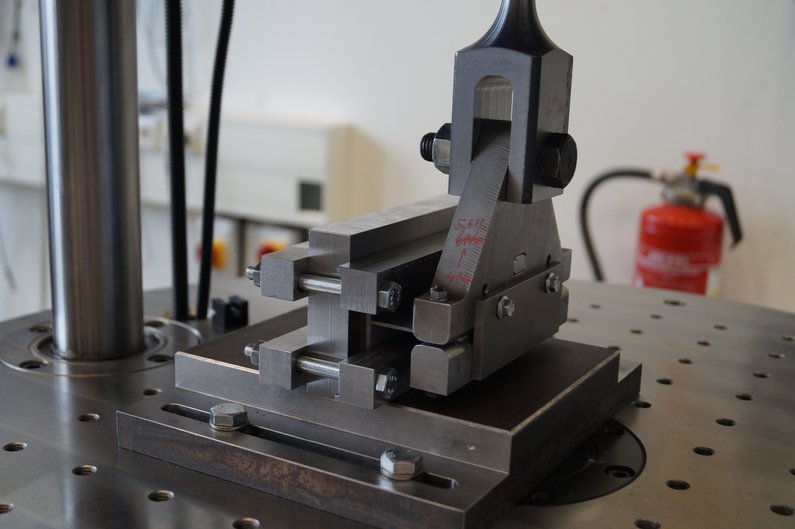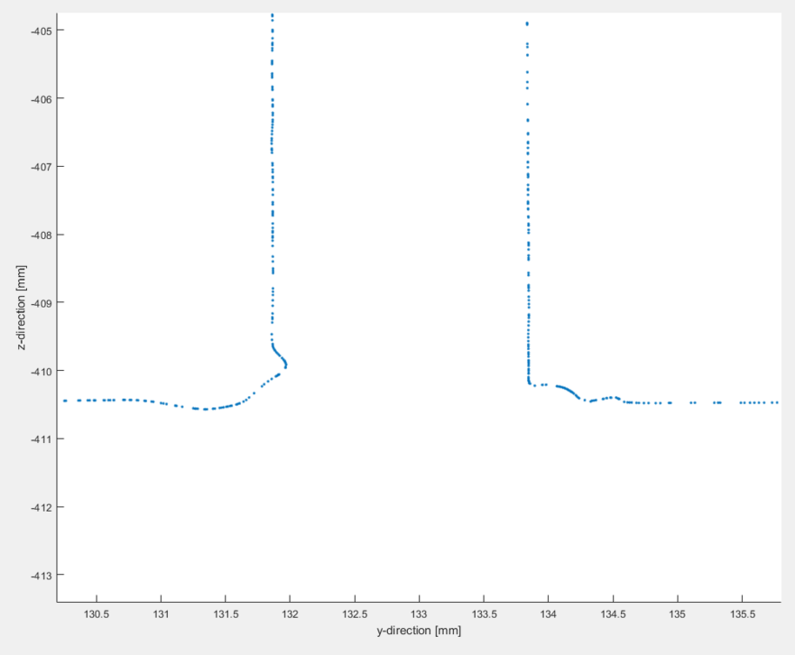Fatigue Strength of laserwelded T-joints at thin Plates
Lightweight design of structural components becomes increasingly relevant for ecological and economical reasons. The request for highly invidualized and optimized components raises in all engineering fields; e.g. mechanial engineering, vehicle production, naval architecture.
Fatigue strength is a major design driver for dynamically loaded steel structures. Structural fatigue results in the generation of small cracks which can grow and merge in case of ongoing dynamic loading. Finally, the cracks may compromise the overall integrity of a component or even the complete structure. The cracks occur preferably at design and production notches; e.g. at weld seams. Several computation approaches account for the fatigue life of weld seams. They are based on socalled SN-curves which relate a level of loading, e.g. stress range S to a corresponding number of cycles N until failure.
The notch stress approach is an advanced fatigue prediction concept. It calculates the fatigue life of a weld seam from the stress range in the critical notch. The relevant notch stress is based on the Neuber micro support theory. Therefore, the real notch contour becomes additonal smoothened by a fictive radius. As the notch domain is geometrically small, the calculations require a high resolution of this area. FEA is a very suitable method to determine the notch stress. However, it requires very fine meshes. Thus, the notch stress approach is among the most computation intense concepts.
The notch stress approach is accepted by authorities; e.g. DNV GL for several years now. However, a 5 mm minimum thickness of the plates is required as the approach is not yet sufficient for thin plated structures. International research is ongoing to overcome the restriction. This research project aims to contribute to the developments.
Therefore, fatigue experiments are performed to determine the SN-curves of laserwelded T-joints at 2 - 3 mm plate thicknesses. The specimens are produced on a welding robot plant of an industrial partner. The SN-curves distinguish between cracks at top and root side of the welds. Before testing, all weld seams become geometrically digitized and statistically treated in order to form a sound basis for the FEA computations. Finally, comparisons of experimental and computed fatigue life will be performed to uncover the prediction quality of the results.
The project is performed in collaboration of Kiel University of Applied Science, the University of Southern Denmark and an industrial partner. The project scientist receives the opportunity to take his PhD from the project. The project duration is 6/2018 to 5/2021.


